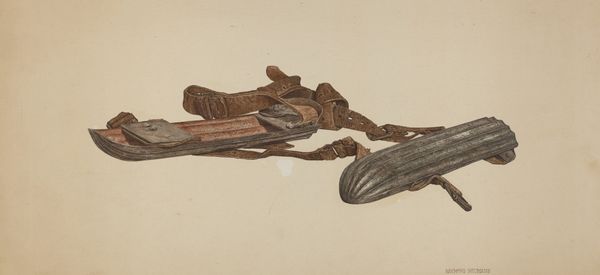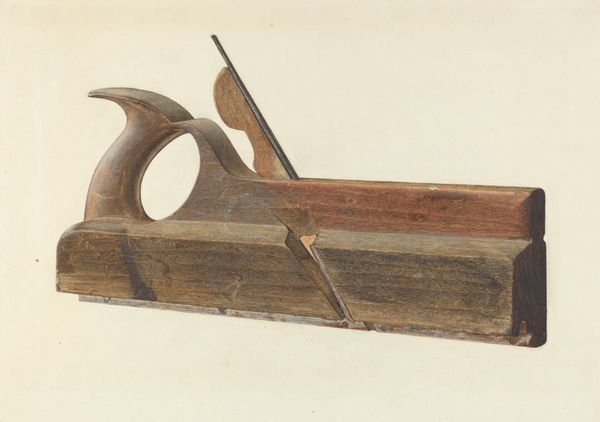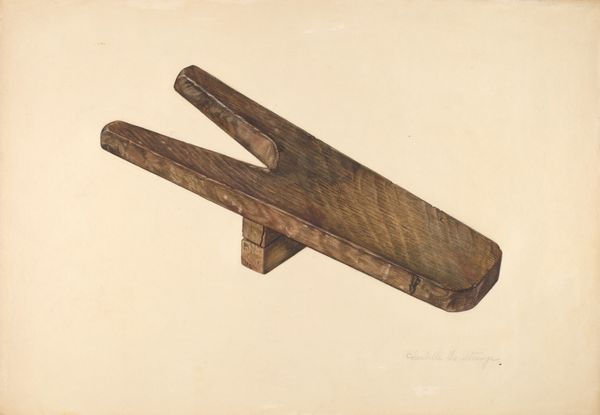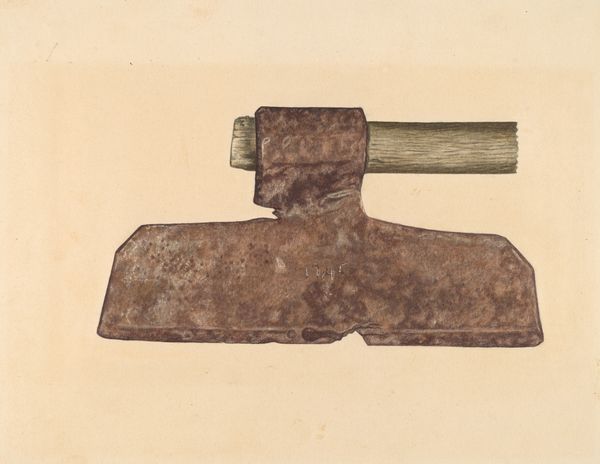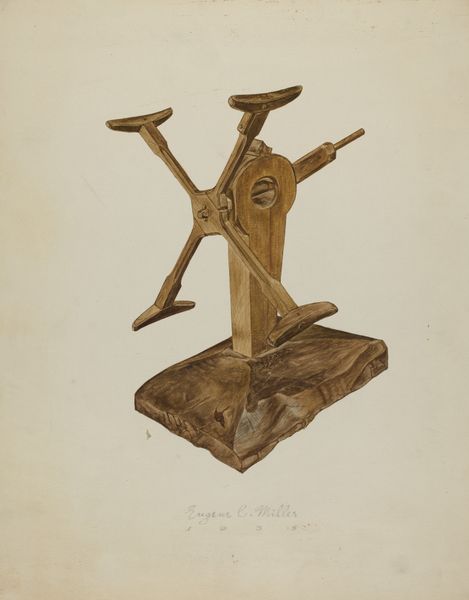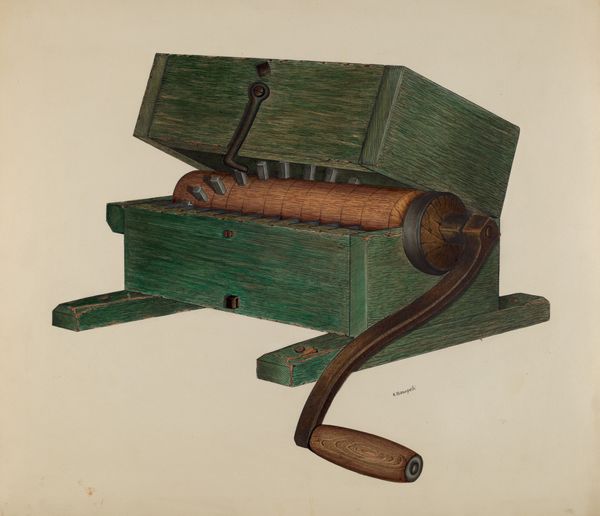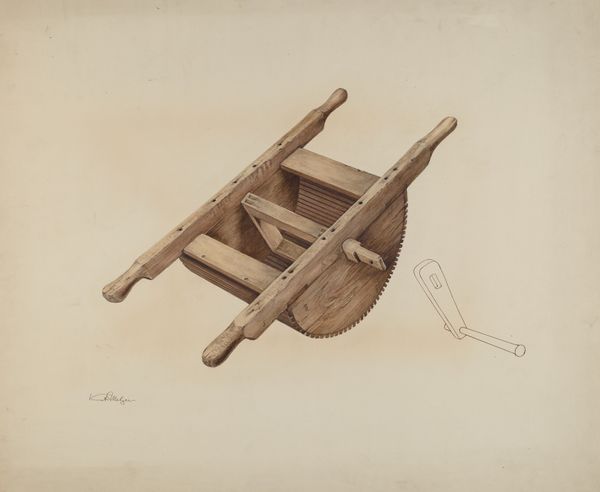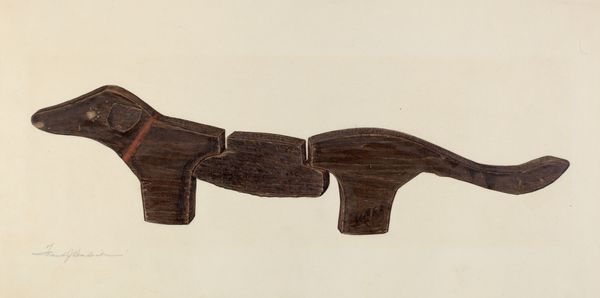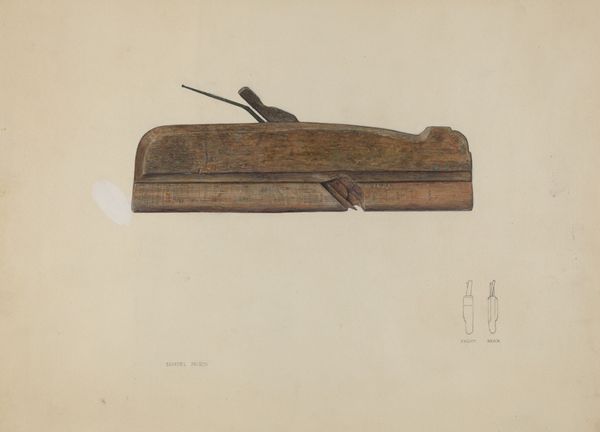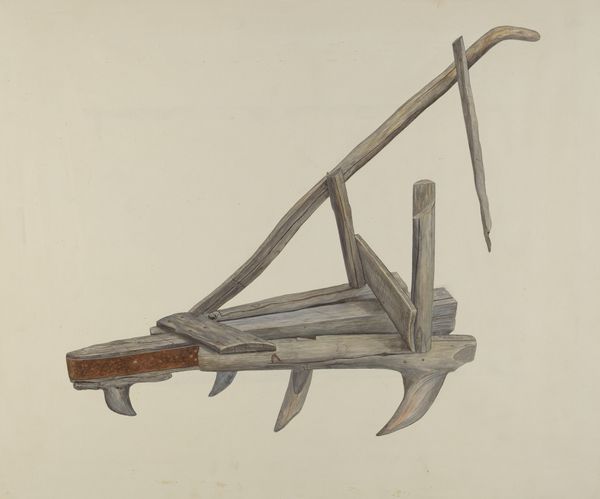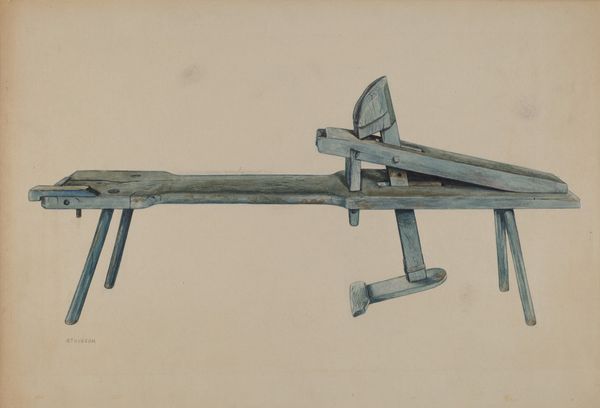
drawing, paper, pencil
#
drawing
#
charcoal drawing
#
paper
#
pencil drawing
#
geometric
#
pencil
#
realism
Dimensions: overall: 33.8 x 46.5 cm (13 5/16 x 18 5/16 in.) Original IAD Object: 36" high; 14" wide; 62" long
Copyright: National Gallery of Art: CC0 1.0
Editor: So, this is Clarence Dawson’s "Shaving Horse," created around 1938 using pencil and charcoal on paper. It's a straightforward, realistic drawing of... well, a shaving horse. The wood grain is so detailed. What strikes me most is the emphasis on this somewhat obscure tool, one that speaks of labor. What do you see in it? Curator: Beyond its realistic depiction, I see a narrative deeply embedded in labor, craft, and the lives of those who depended on these tools. Consider the date, 1938, in the wake of the Great Depression. Dawson's focus here elevates a simple, functional object to a symbol of resilience, self-sufficiency, and working-class identity. This is more than just a picture of a tool; it’s a statement about the value of manual skills at a time when such skills were both essential and undervalued. How might the cultural context of the late 1930s influence how we see this object? Editor: That makes me think about how gendered this labor probably was. Was the artist intentionally making a comment about men in the workforce at the time, or do you think I’m reading too much into it? Curator: I don't think you are reading too much into it. Work was a core part of masculine identity in that era. But by documenting it so precisely, Dawson also makes us consider whose labor is valued and remembered. Was this a nostalgic look back even then? Was it an homage to the fading traditions? The tool is centered and isolated, devoid of human presence. What does this absence suggest to you? Editor: I guess it emphasizes the object's quiet dignity, separate from whoever uses it. I had not considered that. Seeing it as connected to labor movements makes a lot of sense, it's all about who has value in our world. Curator: Exactly. It reminds us to examine not just what is depicted, but also what is absent and what that absence might signify. This piece encourages us to question the hierarchies of value present in both art and society. Editor: This has been enlightening. Now, I look at this drawing and see a story of resilience. Curator: Indeed, art invites us to be active participants in the process of meaning-making, engaging with the social and political realities that shape our world.
Comments
No comments
Be the first to comment and join the conversation on the ultimate creative platform.
